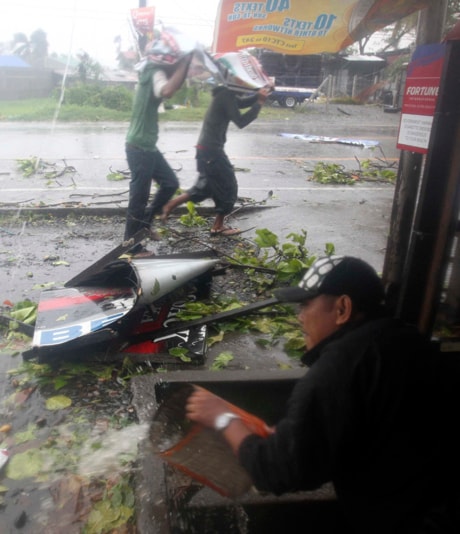CAUAYAN, Philippines — The strongest cyclone in years to crash into the Philippines killed at least three people Monday, leaving a wasteland of fallen trees and power poles and sending thousands scampering to safety in near-zero visibility. A retired general said bracing for the onslaught was like preparing for war.
Super typhoon Megi, blowing across the northern Philippines, was forecast next to head toward China and Vietnam, where recent floods unrelated the storm have caused 30 deaths.
On Monday, strong currents on Vietnam’s flooded main highway swept away a bus and 20 of its passengers, including a boy pulled from his mother’s grasp. In China, authorities evacuated 140,000 people from a coastal province ahead of the typhoon.
Megi packed sustained winds of 225 kilometres per hour and gusts of 260 km/h as it made landfall midday Monday at Palanan Bay in Isabela province, felling trees and utility poles and cutting off power, phone and Internet services. Its ferocious wind slightly weakened while crossing the mountains of the Philippines’ main northern island of Luzon.
With more than 4,000 people riding out the typhoon in sturdy school buildings, town halls, churches and relatives’ homes, roads in and out of coastal Isabela province, 320 kilometres northeast of Manila, were deserted and blocked by collapsed trees, power lines and debris.
One man who had just rescued his water buffalo slipped and fell into a river and drowned in Cagayan province, near Isabela. A woman was pinned to death when a tamarind tree crushed her house and injured her child in Kalinga province, and a security guard died after being struck by a pine tree in nearby Baguio city, officials said.
At least six were injured in the region by falling trees, collapsed roof and shattered glass, officials said.
As it crashed ashore, the typhoon whipped up huge waves. There was near-zero visibility and radio reports said the wind was so powerful that people could not take more than a step at a time. Ships and fishing vessels were told to stay in ports, and several domestic and international flights were cancelled.
The entire Isabela province lost power along with 16 of Cagayan’s 28 towns as the typhoon blew by. Cagayan Governor Alvaro Antonio said the wind was fierce but blew high from the ground, sparing many ricefields ready for harvesting.
Although initial casualties were low compared to past storm disasters, retired army Maj.-Gen. Benito Ramos, who heads the country’s disaster-preparedness agency, expressed sadness over the deaths. Bracing for the typhoon, he said, was like “preparing for war.”
“This was tougher because in war, I could take a nap,” Ramos told The Associated Press.
